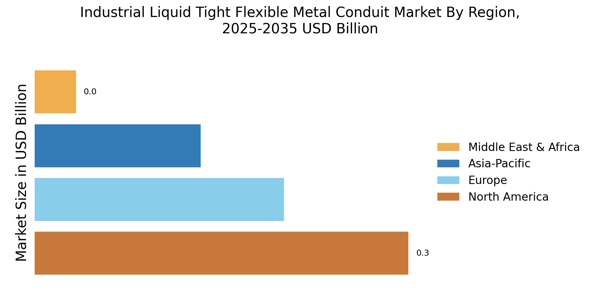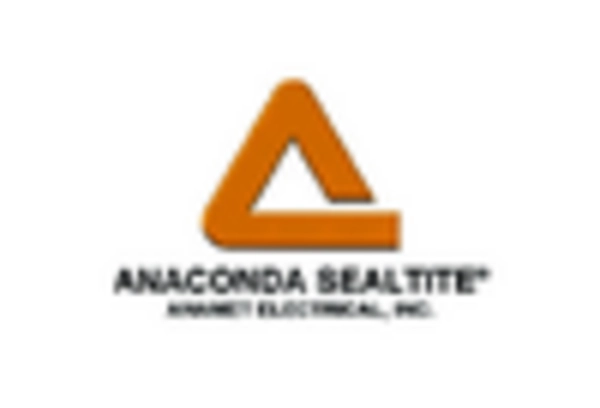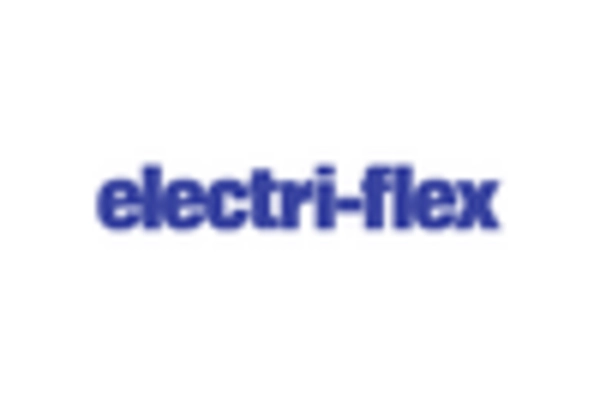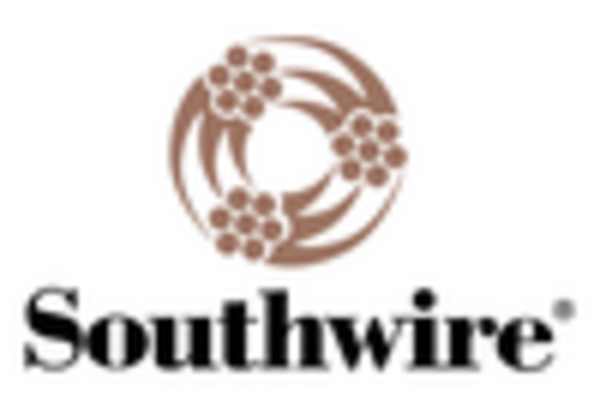Stringent Regulatory Standards
Stringent regulatory standards across various industries are driving the Industrial Liquid Tight Flexible Metal Conduit Market. Compliance with safety and environmental regulations necessitates the use of high-quality conduit solutions that meet specific criteria. Industries such as oil and gas, pharmaceuticals, and food processing are particularly affected by these regulations. The market for industrial conduits is expected to grow as companies prioritize compliance to avoid penalties and ensure operational safety. This trend indicates a sustained demand for liquid tight flexible metal conduits that adhere to rigorous standards, thereby enhancing their market presence.
Increasing Industrial Automation
The rise in industrial automation is a pivotal driver for the Industrial Liquid Tight Flexible Metal Conduit Market. As industries increasingly adopt automated systems, the need for reliable and durable conduit solutions becomes paramount. These conduits protect electrical wiring from moisture, dust, and mechanical damage, ensuring uninterrupted operations. According to recent data, the automation market is projected to grow at a compound annual growth rate of over 9% in the coming years. This growth directly correlates with the demand for industrial liquid tight flexible metal conduits, as manufacturers seek to enhance operational efficiency and safety in automated environments.
Expansion of Renewable Energy Sector
The expansion of the renewable energy sector significantly influences the Industrial Liquid Tight Flexible Metal Conduit Market. As countries invest in solar, wind, and other renewable energy sources, the demand for robust electrical infrastructure increases. Liquid tight flexible metal conduits are essential in these applications, providing protection against environmental factors. The renewable energy market is expected to witness substantial growth, with investments projected to reach trillions in the next decade. This trend suggests a corresponding rise in the need for conduits that can withstand harsh conditions while ensuring the safety and reliability of electrical systems.
Rising Infrastructure Development Projects
Rising infrastructure development projects worldwide are a crucial driver for the Industrial Liquid Tight Flexible Metal Conduit Market. As governments and private entities invest in building and upgrading infrastructure, the demand for reliable electrical systems increases. Liquid tight flexible metal conduits play a vital role in protecting electrical wiring in various applications, including transportation, utilities, and commercial buildings. The infrastructure sector is projected to grow significantly, with investments in billions expected over the next few years. This growth is likely to create substantial opportunities for conduit manufacturers, as they cater to the evolving needs of the infrastructure market.
Technological Advancements in Conduit Manufacturing
Technological advancements in conduit manufacturing are reshaping the Industrial Liquid Tight Flexible Metal Conduit Market. Innovations in materials and production techniques have led to the development of conduits that offer superior flexibility, durability, and resistance to environmental factors. These advancements not only improve product performance but also reduce manufacturing costs, making conduits more accessible to a broader range of industries. As manufacturers continue to invest in research and development, the market is likely to see an influx of innovative products that cater to diverse applications, thereby driving growth in the sector.


















Leave a Comment